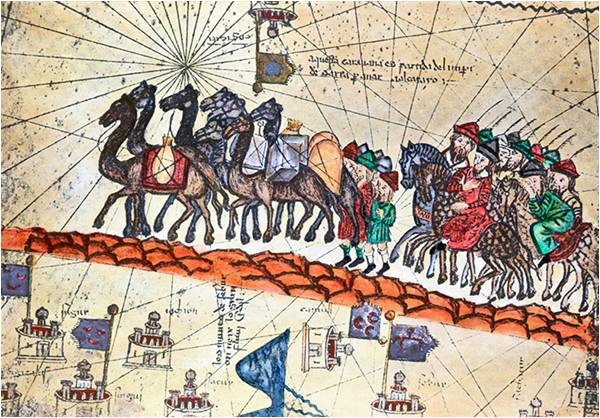
The Silk Road – China and the Karakorum Highway: A Travel Companion
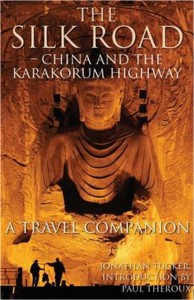
Jonathan Tucker
I B Tauris [paperback], 2015
PRs 2,755
Stretching from the ancient Chinese capital of Xian across the expanses of Central Asia to Rome, the Silk Road was, for 1,500 years, a vibrant network of arteries that carried the lifeblood of nations across the world. Along a multitude of routes everything was exchanged: exotic goods, art, knowledge, religion, philosophy, disease and war. From the East came silk, precious stones, tea, jade, paper, porcelain, spices and cotton; from the West, horses, weapons, wool and linen, aromatics, entertainers and exotic animals. From its earliest beginnings in the days of Alexander the Great and the Han dynasty, the Silk Road expanded and evolved, reaching its peak during the Tang dynasty and the Byzantine Empire and gradually withering away with the decline of the Mongol Empire.
In this beautifully illustrated book, which covers the China section of the Silk Road – from Xian through Loulan, Korla, Turfan and Khotan to Kashgar and onwards to India – Jonathan Tucker uses travellers’ anecdotes and a wealth of literary and historical sources to celebrate the cultural heritage of the countries that lie along the Silk Road and illuminate the lives of those who once travelled through the very heart of the world.
Amrita – Imroz: A Love Story
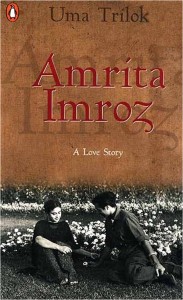
EID READING!
Uma Trilok
Penguin India [paperback], 2006
PRs 375
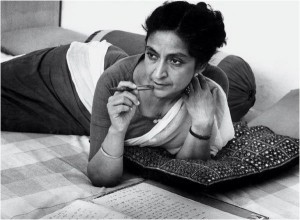 Evocative, esoteric and enchanting. Amrita – Imroz: A Love Story is more than what the title suggests. It is a love story with a difference. Writer, rebel and nonconformist to the core, Amrita Pritam has long been synonymous with Punjabi literature. Drawing inspiration from the Sufi poets, she produced lustrous poetry and thought-provoking prose that soon earned her the title of ‘Awaaz-e-Punjab’. When Amrita and Imroz met, Amrita, who had started writing in her teens, was a young mother of two and he, a well-known artist. What ensued was the love story of a poet and a painter.
Evocative, esoteric and enchanting. Amrita – Imroz: A Love Story is more than what the title suggests. It is a love story with a difference. Writer, rebel and nonconformist to the core, Amrita Pritam has long been synonymous with Punjabi literature. Drawing inspiration from the Sufi poets, she produced lustrous poetry and thought-provoking prose that soon earned her the title of ‘Awaaz-e-Punjab’. When Amrita and Imroz met, Amrita, who had started writing in her teens, was a young mother of two and he, a well-known artist. What ensued was the love story of a poet and a painter.Uma Trilok, a close friend of both, delves into the corners of the lives of these subversive lovers, sharing with her readers lesser known aspects of their undefined relationship, a bond perhaps best described by Pritam herself: “When I wrapped myself with your being / Our bodies turned inwards in contemplation / Our limbs intertwined Like blossoms in a garland / Like an offering at the altar of the spirit… Our names, slipping out of our lips / Became a sacred hymn…”
From the book: “At the end of the deserted cremation ground, a few people were standing, silently staring at the burning pyre. Away from everybody, alone, standing in a corner, I spotted Imroz. Going close to him and touching his shoulder from behind, I muttered, ‘Don’t be sad.’ Somehow I always felt that Imroz would become very sad after Amrita’s death. He turned, and looking at me, said, ‘Uma, why be sad? What I could not do, Nature did.’”
Anthony Blunt: His Lives VINTAGE FIND!
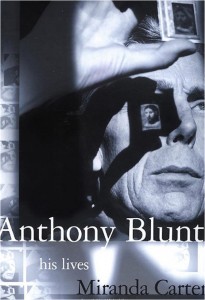
Miranda Carter
Farrar, Straus and Giroux [hardback], 2001
PRs 1,070
When Anthony Blunt died in 1983, he was a man about whom almost anything could be – and was – said. As Surveyor of the Queen’s Pictures and Director of the Courtauld Institute, Blunt’s position was assured until his exposure in 1979 left his reputation in tatters. Miranda Carter’s brilliantly insightful biography gives us a vivid portrait of a human paradox. Blunt’s totally discrete lives, with their permanent contradictions, serve to remind us that there is no one key to any human being’s identity: we are all a series of conflicting selves.
This engaging and important biography examines the many masks he wore: from Cambridge art historian turned spy who worked simultaneously for British Intelligence and the Soviet Union during WWII. Why did he betray his country? Carter provides an exhaustive psychological study of Blunt’s early life. His brutalizing public school (where he was unhappy and unpopular), Carter argues, “inadvertently fostered a questioning and subversive attitude and a profound distrust of authority.” When the Depression hit England in the 1930s and the specter of fascism threatened Europe, communism became fashionable among left-leaning intellectuals like Blunt and his Cambridge friend Guy Burgess. Blunt’s homosexuality, like Burgess’s, also appears to have alienated him from the establishment.
During WWII, Blunt was assigned to British intelligence, giving him easy access to military secrets, which he smuggled to the Soviets. After his Cambridge spy friends Burgess, Donald MacLean and Kim Philby defected to the Soviet Union after the war, British Intelligence began investigating Blunt. In 1964, he was granted immunity in exchange for his confession and full cooperation. British intelligence worked hard to keep “the Blunt affair” a secret. He wasn’t publicly exposed until 1979, when Margaret Thatcher denounced him. But the biggest challenge any Blunt biographer faces is Blunt himself – a man of almost legendary emotional detachment. Blunt revealed little about his personal life, yet Carter has managed to bring readers as close to this enigmatic man as humanly possible.
The Autobiography of Martin Luther King, Jr. EID READING!
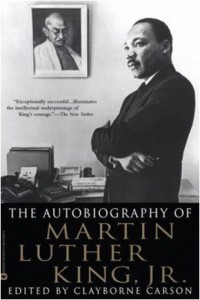
Ed. Clayborne Carson
Warner Books [paperback], 1998
PRs 645
Using Stanford University’s voluminous collection of archival material, including previously unpublished writings, interviews, recordings, and correspondence, King scholar Clayborne Carson has constructed a remarkable first-person account of Dr King’s extraordinary life. As director and editor of the Martin Luther King Papers Project, with thousands of King’s essays, notes, letters, speeches, and sermons at his disposal, Carson has organized King’s writings into a posthumous autobiography.
In an early student essay, King prophetically penned: “We cannot have an enlightened democracy with one great group living in ignorance... We cannot have a nation orderly and sound with one group so ground down and thwarted that it is almost forced into unsocial attitudes and crime.” Such statements, made throughout King’s career, are skillfully woven together into a coherent narrative of the quest for social justice. The autobiography delves, for example, into the philosophical training King received at Morehouse College, Crozer Theological Seminary and Boston University, where he consolidated the teachings of Afro-American theologian Benjamin Mays with the philosophies of Locke, Rousseau, Gandhi and Thoreau.
Through King’s voice, the reader intimately shares in his trials and triumphs, including the Montgomery Boycott, the 1963 “I Have a Dream Speech,” the Selma March and the 1964 Nobel Peace Prize. In one of his last speeches, King reminded his audience that, “in the final analysis, God does not judge us by the separate incidents or the separate mistakes that we make, but by the total bent of our lives.” Carson’s skillful editing has created an original argument in King’s favor that draws directly from the source, illuminating the circumstances of King’s life without deifying his person.

